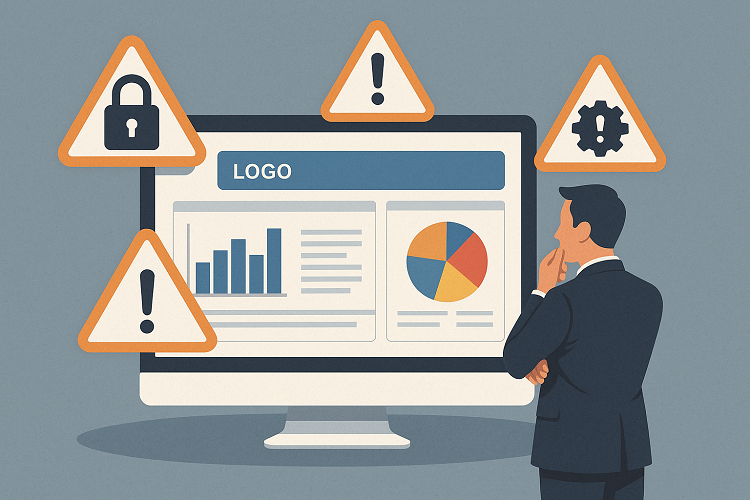White label dashboards offer businesses a powerful tool to embed analytics seamlessly into their software, maintaining brand consistency and enhancing user experiences. Best-in-class BI platforms like Yellowfin enable customization of the UI, allowing companies to merge analytics with their unique brand identity effectively, a feature known as white label BI. Despite these advantages, such as quick market entry and less risky partnerships, hidden risks can pose significant challenges.
Issues like navigating brand consistency problems arise alongside concerns for data security and privacy, not forgetting the limitations in customization options that white labels sometimes present. As we dive deeper into these obstacles, let’s first focus on how brands tackle consistency issues while using white label solutions.
Table of Contents
Navigating Brand Consistency Challenges
Navigating brand consistency challenges is a path many tread with caution. When your business leans on white label Business Intelligence (BI) tools, maintaining that unique brand identity becomes essential yet tricky. The advantage here is clear: by integrating analytics directly into user workflows via white label solutions, users interact seamlessly without sensing an external presence.
This approach not only strengthens the connection between customer and company but also significantly reduces the barrier to market entry for those analytics capabilities you’ve worked hard to provide. It’s about making sure everything from dashboards to reports carries your unique aesthetic fingerprint without deviating from core functions or introducing unnecessary complexities. For businesses wanting consistent branding across platforms, the best tools for white label offer customization and efficiency. They ensure every visual element reflects your brand’s ethos while avoiding security risks from third-party affiliations.
Ensuring Data Security and Privacy
Ensuring data security and privacy with white label dashboards is critical. You need to be aware of the elements that put your data at risk.
- JavaScript usage: JavaScript enhances dashboard flexibility but requires a careful approach. It allows for creating custom interfaces without heavy coding, increasing efficiency in embedding analytics into applications. However, this flexibility also exposes data to potential security vulnerabilities if not properly managed.
- iFrame limitations: iFrames may seem convenient for embedding content, but pose significant risks. They’re notoriously less secure than other methods, making them a weak link in protecting user information within SaaS platforms offering analytics services.
- Customization versus Security: Opting for extensive customization can inadvertently impact security measures. While solutions like Qrvey offer high levels of tailoring options through CSS style classes, balancing aesthetic preferences with robust security protocols ensures sensitive information remains protected at all times.
Customization Limits of White Label Solutions
Customization limits of white-label solutions often surprise many in the banking sector. While they promise rapid deployment and cost savings, their adaptability can be disappointing. Clients frequently find that beyond surface-level changes like logos or colors, significant modifications aren’t possible without extensive vendor collaboration.
This similarity, much like cars rolling off the same assembly line with different badges, can dilute a bank’s unique brand identity and customer experience, making it difficult to stand out in a crowded market. Over time, this may erode customer loyalty and hinder the justification of premium offerings. However, understanding these constraints early on allows for strategic planning around them to leverage white-
label products effectively while maintaining competitive advantages.
As you explore white label dashboards, remember to tread carefully. These tools offer vast benefits but carry hidden risks like data security concerns and potential brand inconsistency. Choosing a reputable provider with strong support and customization options is key.
Always check for transparent reporting features to ensure your client’s data stays secure and their branding remains intact on the platform. The right dashboard can streamline your operations seamlessly, just make sure due diligence guides your choice to protect both your interests and those of your clients effectively.

